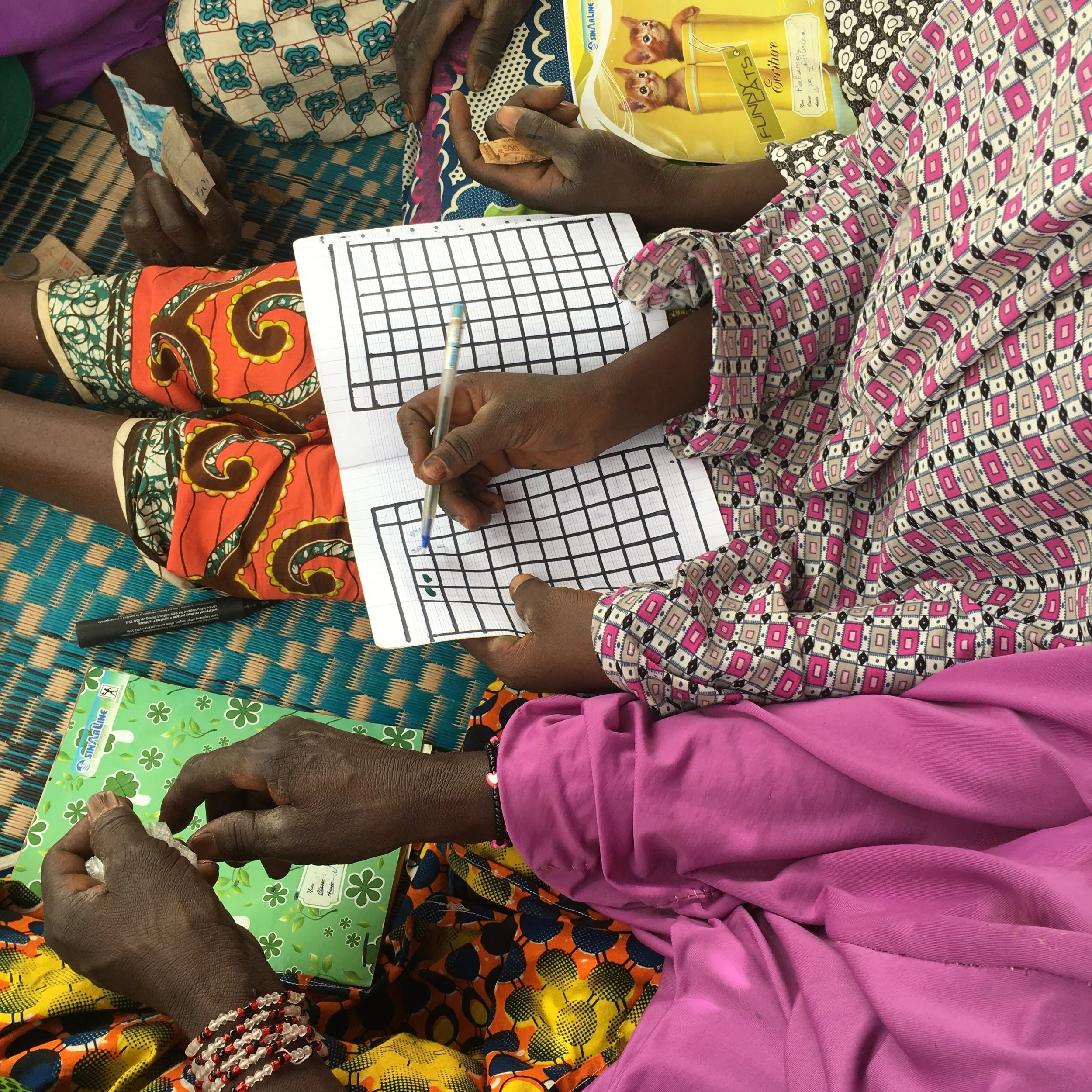Making share-out easier
Warning: this gets a bit nerdy. Only read this if you are into details of Savings Group bookkeeping.
I was recently in West Africa, visiting a remarkable project of NCBA-CLUSA which supporting people in Burkina Faso and Niger to be more resilient in the face of a worsening climate and more and more pressure on farm-land. Among the innovations they are recommending are savings groups.
Niger has 11% women's literacy, and the savings groups are overwhelmingly made up exclusively of women (men are frequently off working). A result is that there are many savings groups where not one member has ever attended a single day of school. Other groups are not quite that dismally non-literate, but overall, most groups lack the skills to keep their books. They often rely on hiring someone, usually a man, to come in and keep their records. And even their hired record keeper may struggle with computing the share-out - that is, figuring out the share that each member should take of the group's collective earnings, the pooled money they have earned from interest (or Thank You Payments) and other sources during the year.
“The innovation is that they say, Go ahead and do it the easier way if you like.”
Members of the project staff have come up with a simple solution to make it easier to calculate the share out. To put this in context, you probably know that in most systems taught by NGOs, every member gets their savings back, plus a share of the earnings that is proportional to their savings. In other words, if you save more than me, you get a bigger share of the group's earnings than I do. That's logical enough, and it encourages people to save more. The trouble is, it can be a bit challenging to calculate. (I have a friend with an advanced degree from a US University who struggles with this a bit, in fact.)
The way to compute the distribution is usually expressed something like this:
- Count the total amount of savings from the records.
- Count all money in the cashbox (savings plus earnings).
- Divide the cashbox total money by the savings total.
- Take the ratio that results from the division and multiply it by each member's savings one by one to get the amount she or he receives.
This isn't easy. Most groups struggle with share out, and - let's be honest - some trainers do also. Faced with the challenge, a lot of groups actually use the following procedures:
- Give everyone their savings back.
- Divide whatever is left over into equal shares, one for each member, and give that to them too.
Much easier!
The project is wisely giving groups the choice of which method to use. The latter easier method may not do as good a job of promoting savings (although who knows what actually motivates people to save?) but its ease means that many groups will be able to compute their own share out. The more complex method often makes the group dependent on an outsider to calculate the share out for them, and that is an invitation to confusion, errors and fraud.
To be clear, this method of computing share out isn't really an innovation since many groups do it that way themselves anyway. The innovation lies rather in the fact that the project is sanctioning the easier method. They say, Go ahead and do it the easier way if you like. The simple method has seldom been presented as an option by the NGOs. The reasons why that might be so could be the subject of another article.




